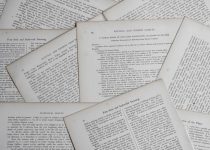What is Ambiguity? Definition, Meaning and Examples
Ambiguity is one of the many things that you will find in literature. The true meaning of the text is not transparent to the reader but yet allows an underlying meaning to the reader as well.
Ambiguity should neither be allowed to perplex the reader nor should it be unclear. Ambiguity contributes to a literary work by setting the tone for the future part and provides humour, tragedy, anguish, suspense and surprise.
The term ‘ambiguity’ was first used by Aristotle in his book ‘Poetics’ to signify that which ‘lies between or among’ (both) meanings. For instance, in “Julius Caesar”, Act I, scene ii, the following soliloquy by Marcus Brutus shows ambiguity in literature:
“Brutus: What is ‘honour’? A word. What is ‘honour’? Air. A trim reckoning! Who hath it? He that died o’ Wednesday.”
This passage indicates that during Caesar’s funeral a modern director of “Julius Caesar” could be justified as using the text ad verbatim, but that would be absurd for two main reasons. First, the funeral oration is not a soliloquy – Brutus is not alone, but is talking to himself.
Table of Contents
Examples of Ambiguity in Literature
One of the most famous examples of ambiguity in literature is the ending of ”The Scarlet Letter,” by Nathaniel Hawthorne.
The reader isn’t told what becomes of the principal characters after the end of the story. This is a source of great debate among readers. Some believe that the characters’ fates are very clear. Others believe they aren’t. Regardless, the unresolved ending has made ”The Scarlet Letter” a classic.
Another example of ambiguity in literature is the plot of the story ”The Lady, or the Tiger,” by Frank R. Stockton. At the end of this story, the reader doesn’t know which of two doors to choose.
Conclusion
To summarise, ambiguity in literature can either prolong or diminish its effect upon the reader.
Authors should strive to use the techniques of ambiguity in addition to other techniques to ensure that the reader is compelled to continue to read and develop sufficient empathy for the characters. Ambiguity in literature should contain distinctive techniques to draw in the reader.
Whatever technique is used, it should be because of a profound understanding of why that technique is appropriate.
If the reader is made aware of the technique used, then they will not be as engaged in the story; so just make sure that the technique is a proper one and the appropriate one.


